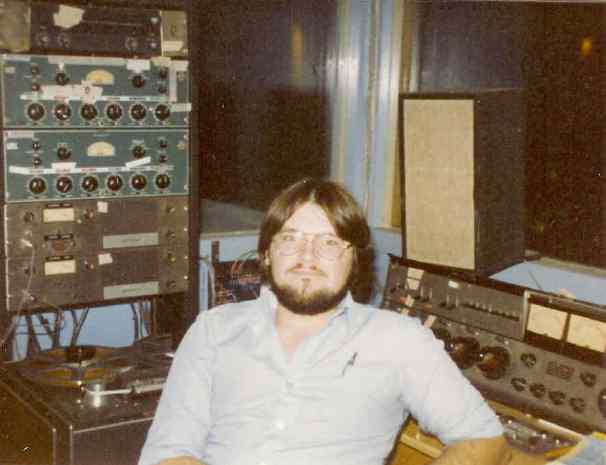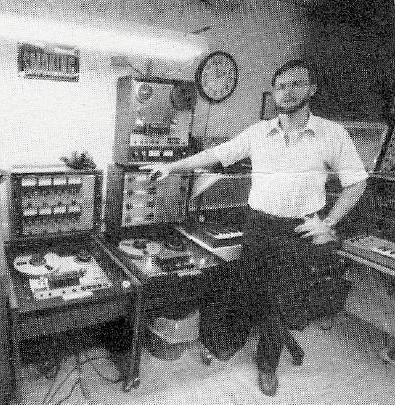
 |
|
#1
|
|||
|
|||
|
Lovely way to start the new year with this entrancing video.
So many topics of which we have previously discussed: such as the importance of Mic placement, phasing, tone from the equipment, and so much more. One very interesting theory that I do not believe we have previously covered: practicing un amplified can help you to get better performance recordings? |
|
#2
|
||||
|
||||
|
I've read of this place, but here's an interesting side point of all this: In 1980 I was doing audiophile recordings with some of this gear: the Ampex AG-440 tape deck, the Altec processing, and a beautiful pair of Neuman M-49 microphones.
 And dig that Gates tube mixing console! Bob
__________________
"It is said, 'Go not to the elves for counsel for they will say both no and yes.' " Frodo Baggins to Gildor Inglorion, The Fellowship of the Ring THE MUSICIAN'S ROOM (my website) |
|
#3
|
|||
|
|||
|
Really interesting video, Acoustic Dreams. Thanks.
|
|
#4
|
|||
|
|||
|
Quote:
In the video he tells us: The compressors are compressing even when the needles don't move. There are sweet spots( a very small area and easy to over do ). Plug in emulations do not work the way the hardware does(however this video was made 6 years ago and there has been a lot of new virtual technology since). |
|
#5
|
||||
|
||||
|
Quote:
The main recorder was an Ampex AG-440 stereo half-track machine with solid-state electronics contained in the silver units right above the transport. The tape transport lacked logic, so if you hit play or stop while the machine was in fast wind, the ample brakes would apply, and it would simply stretch or break the tape. The machine went directly from mode to mode. You were required to "jockey the reels" - applying fast-forward to slow a fast rewind to a momentary stop and THEN punching stop. In some cases, if you accidentally hit stop or play during wind, the amount of torque exerted by the heavy AC induction wind motors could cause a reel clamp to fail. The reel would then exit the machine with bags of kinetic energy, trailing the tape behind it. Had it happened in that control room it would have probably fractured the double windows and dropped the fifteen feet to the audience below.  Ken Jacobs (RIP) has his hand on the 1/2" four track AG-440c By his right hip is Synclavier II serial #0001 Behind him is the Arp 2600 and keyboard for the Eventide H910 Harmonizer and a wall of analog synth goodies. We had an Ampex 440C four track in another facility. A rookie engineer made that mistake once while in fast wind. In the blink of an eye, lock and reel departed the turntable and headed out across the control room, breaking off an adjacent tape machine's tensioning arm. The heavy reel zipped by the young engineer's face like Odd-Job's hat. It transited the control room and ricocheted off the corner of the console's meter bridge, shattering three meters. At this point, the young engineer-to-be wisely elected the better part of valor and dived for cover under the console. The nearly-full reel of one-half inch tape continued on its merry way around the room like a frisbee on steroids, slinging a stream of half-inch tape behind it. By the time the reel's kinetic energy was exhausted and the ricocheting stopped, something on every wall of the control room had been broken or nicked and the entire floor was filled two inches deep with audio tape. From then on, the dings on the walls were carefully preserved and the remains of the failed reel lock hung over the tape deck with a note as a reminder to all of the destructive power of a mishandled tape deck. We used Crown amps to drive the Altec Lansing monitors. There were no compressors used. You learned to ride the level in such a way as to be undetectable. It required that you get psyched up and be able to respond in a fraction of a second as you perceived a swell coming. Pushing into distortion was simply unacceptable, and when you started the job, the manager rode you as if you were a horse. It was a great learning experience. Funny story: My next job was in a recording facility with three (3) Neve consoles, two 8058s and an 8024. The 8058s were spec'd with eight of the great Neve 32264a compressors and the 8024 had eight of the 2264 compressors. When he was training me, my manager said, "If I ever step in here and see you with compressors across the stereo bus I will personally choke you with my own hands." At the beginning of my tenure he popped in often and just scanned the patch bay and listened as I mixed. Obviously, I learned to mix without a compressor in the bus.  Quote:
Bob
__________________
"It is said, 'Go not to the elves for counsel for they will say both no and yes.' " Frodo Baggins to Gildor Inglorion, The Fellowship of the Ring THE MUSICIAN'S ROOM (my website) |
|
#6
|
|||
|
|||
|
Quote:
Damon Krukowski recorded a podcast series a few years ago that this kind of echos. You can hear it here: https://www.radiotopia.fm/showcase/ways-of-hearing
__________________
Patrick 2012 Martin HD-28V 1984 Martin Shenandoah D-2832 2018 Gretsch G5420TG Oscar Schmidt Autoharp, unknown vintage ToneDexter Bugera V22 Infinium |
|
#7
|
|||
|
|||
|
VERY interesting video. I'm amazed at the dedication required to put all that together into a working studio.
|
|
#8
|
|||
|
|||
|
Quote:
That is how most of the recordings of the 30's, 40's & 50's were made I believe? In one room with one, two or three mics. I wonder how many mics where used with those big bands & a single singer back then? p.s. I tried looking up the origins of "No room for mistakes" but could not find any reference as to how that saying came about. Certainly for early recordings that was very relevant. |
|
#9
|
|||
|
|||
|
If you watch the follow up video, where the same engineer produces "vintage sounding" tracks in a modern studio, he says the exact same thing--using top players who know the genre, making period-faithful arrangements, etc. is just as, if not more, important than the gear used.
|
|
#10
|
||||
|
||||
|
Thanks for posting. Saving the thread for when I have some down time.
__________________
David Webber Round-Body Furch D32-LM MJ Franks Lagacy OM Rainsong H-WS1000N2T Stonebridge OM33-SR DB Stonebridge D22-SRA Tacoma Papoose Voyage Air VAD-2 1980 Fender Strat A few Partscaster Strats MIC 60s Classic Vib Strat |